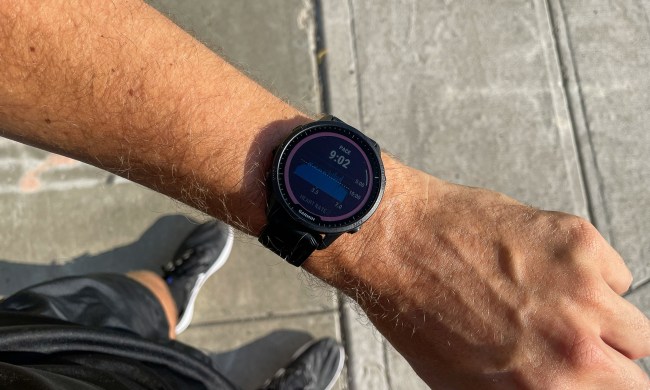Nevertheless, it only takes a cursory look at some of the genre’s most notable movies and TV shows to see that sometimes sci-fi can get it very right indeed. Without further ado, then, here are our picks for eight predictions that turned out to be right on the money.
Back to the Future Part II (1989)
Considering that it’s not remotely close to being hard, serious sci-fi, Back to the Future Part II sure did get a lot right. We’ll ignore the near-continuous efforts to make real-life self-lacing shoes and hoverboards for a second, because those are obviously inspired by the movie rather than predictions that happened to come true, but there’s still plenty to choose from.
The above scene depicts the McFly family using VR headsets that could easily be Oculus Rift or Microsoft Hololens to control their smart home. While it’s not exactly the same, the rehydrating oven also isn’t a million miles away from the various food-related 3D printing projects we keep hearing so much about. Who knew a sci-fi comedy would get 2017 so right? (We’re not entirely sure how happy to be about that!)
Total Recall (1990)
Given how star-studded Paul Verhoeven’s 1990 Arnold Schwarzenegger movie Total Recall is, it’s amazing the extent to which Johnny Cab — the robot taxi driver who ferries Arnie around — steals the show.
Here in 2017, we may not yet have colonized Mars or figured out a way to successfully implant complex false memories into people’s brains (although people are working on both of these problems), but self driving cars are another thing.
Most notable is Uber, which has been field testing its fleet of autonomous robo-cabs since last year. Sadly they don’t quite have Johnny Cab’s personality. Or his driving skills, apparently.
Minority Report (2002)
In some ways, it’s no surprise that 2002’s excellent Minority Report got so much right. Unlike some of the more whimsical entries on this list, director Steven Spielberg purposely sought out real futurists and asked them to extrapolate what was happening in research labs at the time, and how this tech might look in the future.
Nonetheless, for a 15-year-old movie, it remains impressive just how accurate it is. The two big predicted innovations are gesture-based interfaces of the kind a number of researchers have tried to build, and personalized advertising which changes depending on who’s looking at it.
Just don’t get us started on predictive policing…
RoboCop (1987)
Another Verhoeven movie (can you tell we’re fans?) that makes our list is RoboCop. Sure, you can argue that the use of drones and other robotic gadgetry employed by today’s military and law enforcement qualifies this flick for the list, but as far as we’re aware, no one has yet built a half man, half machine (all cop) cyborg to patrol the streets.
The technology which therefore counts? Facial recognition, which RoboCop uses to identify thug Emil Antonowsky following an encounter at a gas station. What seemed crazy futuristic in 1987 seems somewhat less so in an age in which facial recognition tech can unlock our smartphones.
2001: A Space Odyssey (1968)
For this entry, we’re leaving out the thorny question of whether AI is on its way to turning malevolent and killing us all, and instead focusing on the technologies which very much exist here in the present day.
The most obvious of these in 2001: A Space Odyssey is HAL 9000 the smart AI assistant, which is capable of communicating with people using conversational commands — and is the clear antecedent of tools like Siri, Alexa, Cortana, and others.
There are also appearances from a strikingly iPad-like device, and a scene in which the character of Dr. Heywood R. Floyd makes a Skype-style video call to his family. (Although neither Arthur C. Clarke nor Stanley Kubrick apparently predicted the smartphone, based on the fact that he has to step into a special videophone booth in order to do so.)
WarGames (1983)
If you’re old enough to have watched WarGames anywhere close to its 1983 release date, you’ll remember just how amazing it was to think that one day we might be playing online games over what turned out to be the internet.
While this movie doesn’t exactly have to the carefully-researched realism of 2001: A Space Odyssey or Minority Report, it did get one thing very, very right: the major role that hacking and cyberwarfare would play in the future. That’s obviously not such a great prediction to have gotten right.
Star Trek (1966-)
It doesn’t matter which Star Trek incarnation you pick, all have included some variation of the Universal Translator: a device that’s capable of translating between languages in real time. Particularly in a utopian world like Trek’s, the Universal Translator held the promise of a future world in which people of any species could communicate with one another.
Here in 2017, devices like the Google Home can translate between languages — and even do so with convincing pronunciation. Next up? Real-time translating earbuds, apparently. Kirk would be proud!
The Jetsons (1962-)
Let’s be honest: As great as some of the technologies on this list undoubtedly are, the tech we really wanted as kids was a robot to pick up our room for us. Futuristic cartoon family The Jetsons had one and, by gum, we wanted one too!
Jump forward to the present day, and you can get cleaning robots like the Roomba that will vacuum your apartment when you’re out, ones that’ll clean your gutters, and ones that will do the weeding in your garden. What a glorious time to be alive!


